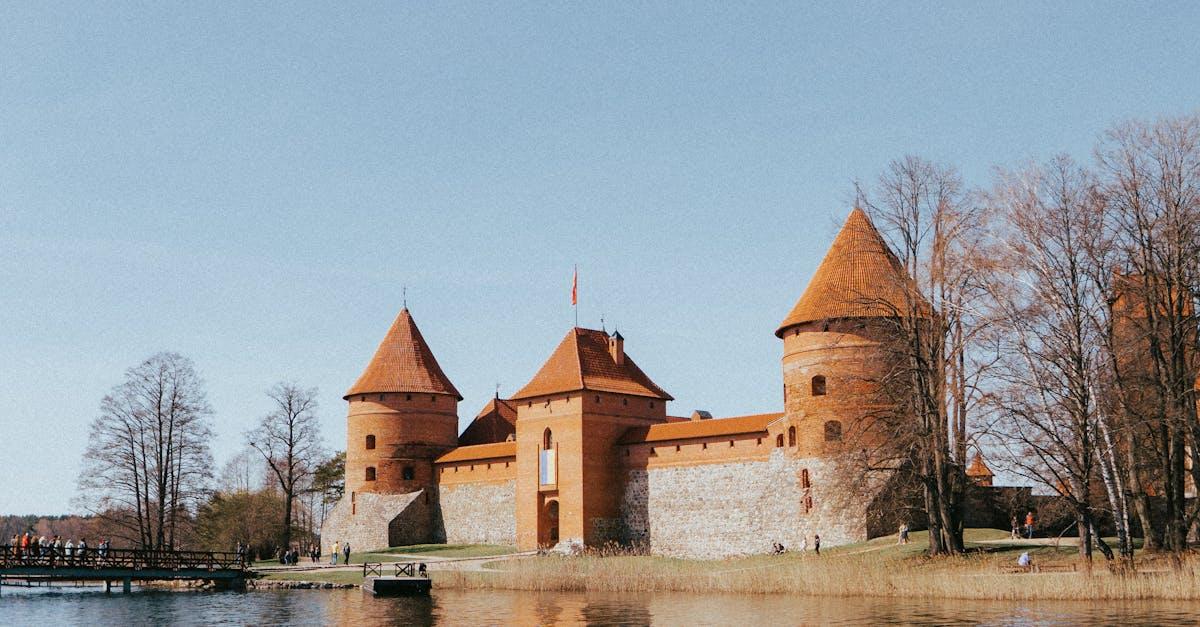Exploring Denmark’s Majestic Castles: A Journey Through History, Architecture, and Royalty
Denmark is home to some of the most spectacular castles in Europe, each brimming with rich history, architectural grandeur, and cultural significance. From Renaissance masterpieces to medieval fortresses, exploring these majestic structures offers visitors a journey through Denmark’s royal past. In this guide, we’ll delve into the most iconic castles you must visit during your trip to Denmark.
1. Kronborg Castle: The Home of Hamlet
One of the most famous castles in Denmark, Kronborg Castle , is a UNESCO World Heritage Site located in Helsingør. Known globally as the setting of Shakespeare’s Hamlet , this Renaissance fortress is a must-see for history buffs and literature lovers alike. Built in the 16th century by King Frederick II, Kronborg was a strategic military stronghold guarding the Øresund Strait. Visitors can explore its grand halls, stunning tapestries, and eerie underground casemates, which house the legendary statue of Holger Danske. Don’t miss the chance to catch a live performance of Hamlet held annually within the castle’s grounds.
2. Frederiksborg Castle: The Nordic Versailles
Located in Hillerød, Frederiksborg Castle is the largest Renaissance castle in Scandinavia. Built in the early 17th century by Christian IV, this magnificent structure is surrounded by serene lakes and beautiful baroque gardens. The castle now houses the Museum of National History, where visitors can admire portraits, artifacts, and treasures spanning over 500 years of Danish history. The immaculate baroque gardens add a touch of royal elegance, making Frederiksborg a truly picturesque destination.
3. Rosenborg Castle: A Royal Time Capsule
Tucked within the heart of Copenhagen, Rosenborg Castle was built in the early 17th century as a summer residence for King Christian IV. Today, it houses the Danish Crown Jewels, coronation thrones, and other royal artifacts, offering visitors a glimpse into Denmark’s regal past. Its well-preserved Renaissance architecture and its proximity to the lush King’s Garden make Rosenborg one of Copenhagen’s most visited landmarks. Be sure to tour the Great Hall and marvel at the grandeur of the royal crowns and scepters.
4. Egeskov Castle: Europe’s Best-Preserved Moat Castle
For a true fairytale experience, head to Egeskov Castle on the island of Funen. This 16th-century castle, surrounded by a shimmering moat, is one of Europe’s best-preserved examples of Renaissance fortifications. Its magical atmosphere is enhanced by the surrounding gardens, which feature hedge mazes, fountains, and even a vintage car museum. Egeskov’s blend of historical architecture and playful exhibitions makes it perfect for families looking for an immersive and enchanting day out.
5. Amalienborg Palace: Home of the Danish Royal Family
In the center of Copenhagen lies Amalienborg Palace , the current residence of the Danish royal family. Consisting of four identical Rococo-style palaces, Amalienborg is famous for its daily changing of the Royal Guard. Visitors can explore the Amalienborg Museum, which offers an intimate look at the life and traditions of the Danish monarchy. A visit here is not complete without watching the formal parade of guards, which adds a regal touch to your exploration.
Tips for Exploring Danish Castles
When planning your visit to Denmark’s castles, be sure to check for guided tours, as many castles offer immersive experiences that bring their history to life. Also, some castles like Kronborg host seasonal events, including live performances and historical reenactments, providing an engaging way to connect with Denmark’s past.
To start planning your adventure, visit The Danish Dream for more insights on Danish history and culture, or subscribe to their YouTube channel for visual tours of these magnificent castles.
Exploring Denmark’s castles is more than just a historical tour; it’s a step back into a world of royalty, architectural beauty, and rich cultural heritage. Whether you’re a history enthusiast, an architecture lover, or someone looking for a magical experience, Denmark’s castles offer something for every traveller.
